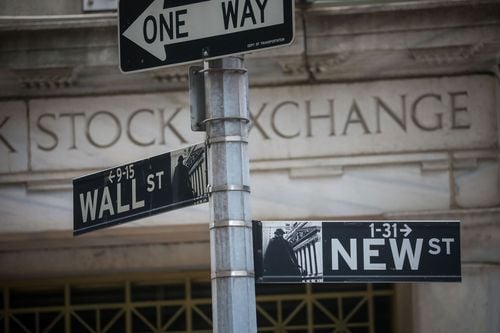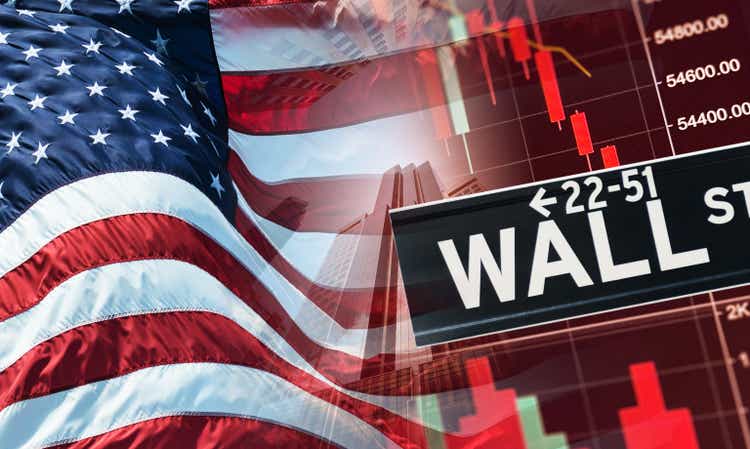Proctor & Gamble announces 7,000 layoffs, as impact of trade war mounts
Proctor & Gamble announced Thursday morning that it will cut 7,000 jobs, or around 15 percent of its global non-production workforce. The consumer products maker also said it may divest some of its brands, although it declined to elaborate.
The announcement was buried in corporate newspeak, but the need to cut costs in the face of growing trade war measures spearheaded by the Trump administration was obviously a major factor. The press release said the company would carry out “interventions in our supply chain—right-sizing and right-locating production” in order to enable “cost reduction” and a “more reliable and resilient supply.”
A related factor is likely a reduction in consumer spending. A report from McKinsey & Company found that “net sentiment” about the economy declined 32 percent in May; rising prices and tariff policies were reported as the top two reasons.
As a result of tariffs, layoffs and price increases will worsen conditions for the working class in the United States and are reaching the breaking point. According to a recent report by the Ludwig Institute for Shared Economic Prosperity (LISEP), a majority of Americans cannot afford what the institute calls a “minimal quality of life.” This figure represents a major increase since the turn of the century, with wages largely stagnating while the cost of a minimal quality of life, as measured by LISEP, almost doubled.
More than half of Americans cannot afford a $2,000 emergency, and 38 percent have put off medical care because of cost, LISEP reports. These figures are the direct result of rising inequality. To afford a minimal quality of life, the share of income going to the bottom 60 percent of Americans would have to nearly double, from 22 to 39 percent.
The cuts at Proctor & Gamble are the latest in a series of mounting layoffs by US-based firms, including: 20,000 job cuts at UPS, which is also in the midst of an automation-led restructuring; 6,000 more layoffs at Microsoft, following a previous round of cuts in January; 3,500 jobs at Citigroup in its China operations, following plans announced last year to cut 20,000 jobs or 10 percent of its workforce; 1,500 jobs at big box retailer Walmart, and hundreds of employees at Disney.
In its monthly report, outplacement firm Challenger, Grey & Christmas recorded a sharp year-on-year increase in announced layoffs by US firms. At least 93,816 layoffs were announced last month, up 47 percent from the same time last year. Five months into the year, 696,309 layoffs have been announced, by far the highest number since over 1.4 million layoffs by this time in 2020, during the initial peak of the coronavius pandemic.
“Tariffs, funding cuts, consumer spending, and overall economic pessimism are putting intense pressure on companies’ workforces. Companies are spending less, slowing hiring, and sending layoff notices,” the firm’s senior vice president Andrew Challenger noted.
Federal job cuts, spearheaded by the Department of Government Efficiency (DOGE) which was until recently headed by Elon Musk, accounted for 284,044 layoffs, followed by “market and economic conditions,” dominated by tariffs, at 131,257.
The impact of global trade war since Trump’s “liberation day” reciprocal tariffs in April is beginning to mount across the US and world economy. On Wednesday, Trump’s doubling of his previous tariffs on steel and aluminum from 25 to 50 percent went into effect.
In a warmongering speech last Friday, Trump justified the move on “national security” grounds, making clear that it is part of preparations for world war. “You can’t make a military. What are we going to do, say ‘let’s go to China’ for the army tanks and boats and ships?” he said.
The latest government figures show that imports plummeted by more than 16 percent in April in the aftermath of the tariff announcement. While this is partly due to stockpiling in March in anticipation of the tariffs, there are growing signs that the moves are wreaking havoc on world supply chains. “U.S. factories and businesses also significantly cut their purchases of foreign machinery and other supplies,” according to the New York Times. “Imports from China, a major source of machinery and consumer goods, hit a five-year low.”
The US trade deficit fell chiefly due to a sharp fall in imports. Significantly, a major driver of a modest rise in exports was the movement of gold bullion out of the United States, the Times reported, reflecting growing concerns about the economic and political stability of the US, as well as the world financial system underpinned by the role of the dollar as the reserve currency.
In a recent letter to Congressional Democrats, the Congressional Budget Office (CBO) claimed that increased revenues due to tariffs would cut the US deficit by $2.8 trillion over 10 years. The CBO also predicts the tariffs will contribute to a shrinking of the economy and 0.4 percent in additional inflation.
The forecast increase in revenues is a drop in the bucket because annual budget deficits are also forecast to increase to $2.5 trillion by the end of the same period. It would also be offset by the impact of tax cuts for corporations and the wealthy in the so-called “Big Beautiful Bill” working its way through Congress, which also includes hundreds of billions in cuts to Medicaid, food stamps and othere essential social programs. The CBO estimates that the bill would add $2.4 trillion to the deficit over the next decade.
The CBO forecast did not take into account Trump’s doubling of his own steel and aluminum tariffs, which are expected to mean higher prices for cars, new homes, canned goods and other essentials. Even the earlier 25 percent tariffs was expected to add $10,000 to the cost of a new home.
The claims made by Trump, and parroted by the trade union bureaucracy, that tariffs will lead to a resurgence in domestic manufacturing are being rapidly exposed as a total fantasy. In the 21st century, production in any country proceeds through a complex global supply chain network.
An article in The Verge warns that production lines in the US auto industry are already shutting down due to the lack of access to rare earth magnets, the market in which 90 percent is dominated by China. According to the New York Times, “China refines over 99 percent of the world’s supply of so-called heavy rare earths, which are the least common kinds of rare earths. Heavy rare earths are essential for making magnets that can resist the high temperatures and electrical fields found in cars, semiconductors and many other technologies.”
China retaliated against Trump’s levying of tariffs against it by cutting off all access to rare earth minerals in April.
Meanwhile, trade war is having a heavy impact on Canada, the US’s largest trading partner. The country posted its worst ever trade deficit in April, and sales of Canadian-made automobiles plunged 23 percent, according to the Times.
The reality is that the overriding concern behind the tariffs is preparations by US imperialism for war. As Leon Trotsky observed of the spiraling trade wars of the 1930s, which led directly to World War II, “breeding places of nationalism also are the laboratories of terrific conflicts in the future; like a hungry tiger, imperialism has withdrawn into its own national lair to gather itself for a new leap.”
This drive to war was stated bluntly last Friday by Jamie Dimon, CEO of JPMorgan Chase, at the Reagan National Economic Forum. “We shouldn’t be stockpiling bitcoins,” the billionaire banker said during a discussion of the “national security” implications for industry. “We should be stockpiling guns, bullets, tanks, planes, drones, you know, rare earths. We know we need to do it. It’s not a mystery.”
He added: “[t]he military guys tell you that, you know, if there’s a war in the South China Sea, we have missiles for seven days … we can’t say that with a straight face and think that’s okay. So we know what to do. We just got to now go about doing it.”
With these words, the head of the largest American bank is arguing for a militarized economy to prepare for World War III against China. But he considers the most serious threat to American capitalism not China but the “enemy within.”
“What I really worry about is us,” he said. “Can we get our own act together, our own values, our own capability, our own management?
“I always get asked this question: Are we going to be the reserve currency? No. You know, if we are not the preeminent military and the preeminent economy in 40 years, we will not be the reserve currency.”
Dimon urged a return to what he called “our virtues: freedom of speech, freedom of religion, freedom of enterprise, equal opportunity, family, God, country.” This is a veiled call for massive repression and dictatorship in order to impose “unity” from above.
This must be opposed by the working class, which must reject nationalism in favor of a strategy based on the international unity of the working class, uniting across national borders to abolish the capitalist profit system and taking control of the global economy to run it for human need. This is the program of socialism.
The Socialist Equality Party is organizing the working class in the fight for socialism: the reorganization of all of economic life to serve social needs, not private profit.



